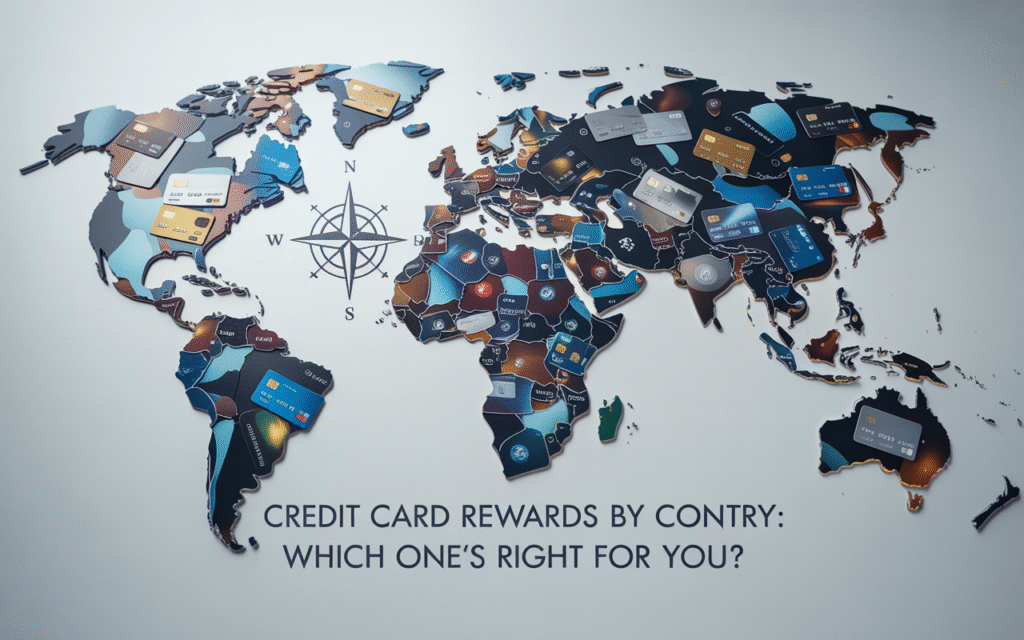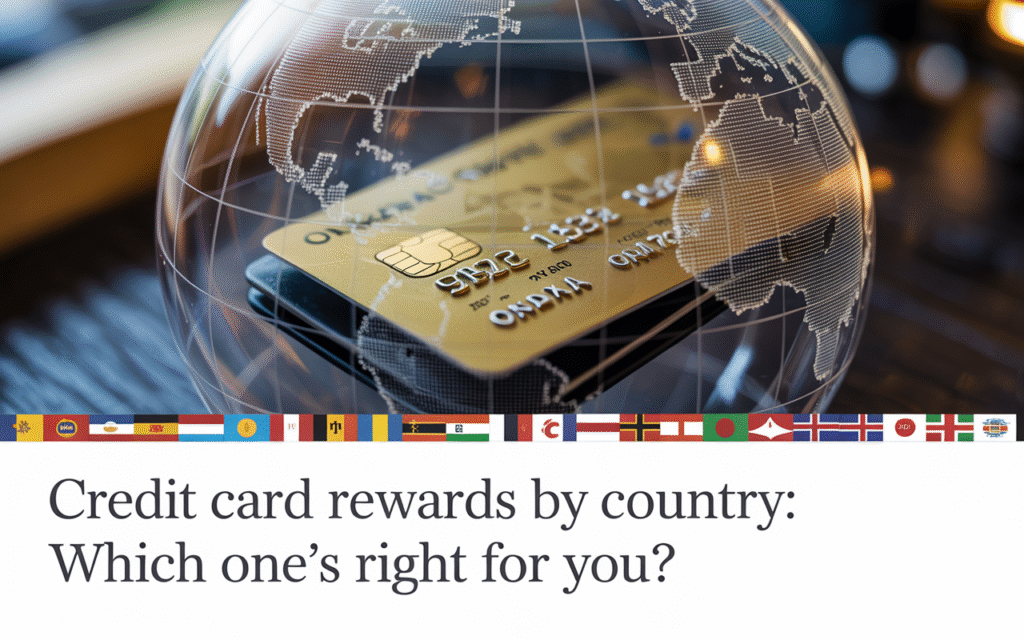
Let me guess—you’re finally thinking about getting a credit card with rewards, or maybe you already have one and you’re wondering, “Am I actually getting anything useful from this thing?” Trust me, you’re not alone.
I remember the first time I applied for a rewards card. I thought, “Cool, I’ll be flying for free in no time!” Fast forward six months, and all I’d earned were a few points I didn’t understand and a free tote bag (no joke). So yeah, I learned the hard way that not all rewards cards are created equal—especially depending on where you live.
So today, I wanna help you figure out which rewards card makes sense for YOU, based on where you are and what your lifestyle looks like. This isn’t some fancy breakdown full of charts and jargon. It’s just honest advice, some examples from real people, and a little guidance to help you actually get something good out of your plastic.
First Things First: What Kind of Spender Are You?
Before we even get into the countries and cards, you gotta know yourself a little.
- Are you someone who travels a lot?
- Do you spend more on groceries, gas, or online shopping?
- Are you okay with paying an annual fee if the perks are worth it?
I’m not gonna lie—some cards are great on paper but don’t actually match your day-to-day life. I had a friend, Amanda, who got this fancy travel rewards card, but she barely left her city. She ended up paying $95/year for points she couldn’t really use. Total waste.
United States: Big Choices, Bigger Traps
If you’re in the U.S., you’re spoiled for choice—but also, it’s easy to get overwhelmed.
Best for Beginners:
💳 Chase Freedom Unlimited® – No annual fee, 1.5% cash back on everything, and more on travel, dining, and drugstores. It’s simple, and it works.
Best for Travelers:
💳 Chase Sapphire Preferred® – Yeah, it has a $95 annual fee, but the points are flexible, you get travel protection, and they’re super valuable when used with airlines or hotels.
Best for Groceries/Families:
💳 Blue Cash Preferred® Card from AmEx – 6% back on groceries and streaming services? That adds up fast, especially if you’re feeding a family.
👉 Ojo con esto: AmEx isn’t accepted everywhere, so if you travel or shop at smaller places, keep a backup Visa or Mastercard handy.
Canada: Rewarding but a Bit Slower
In Canada, rewards take a little longer to build up, but there are still solid options.
Best All-Around:
💳 Scotiabank Gold American Express – No foreign transaction fees (which is rare!), and great for groceries, dining, and gas.
For Costco Lovers:
💳 CIBC Costco Mastercard – If you shop at Costco weekly (like my cousin in Toronto), this one gives you cash back and works as your membership card. Handy!
📌 Tip: In Canada, pay attention to how you redeem points—some cards offer more value for travel than for statement credits.
Mexico: Go for Cash Back, Not Miles
Okay, la verdad que in Mexico, most people find cashback cards more useful than travel ones. Airline miles can be tricky unless you’re flying a lot.
Best for Everyday Use:
💳 BBVA Tarjeta Azul – Gives you up to 9% back on some categories and has a decent app to track your points.
For Digital Nomads:
💳 RappiCard Visa – No annual fee, 1%-2% cashback, and no foreign transaction fees. Plus, it’s 100% app-based. My buddy Andrés uses it while working remotely across Latin America.
📝 Te lo digo por experiencia: stick with cards from bigger banks if you plan to use your card abroad. Smaller banks might block international purchases or give you poor exchange rates.
Europe (Let’s Take the UK for Example)
The UK has a different vibe—cards here often give Avios (British Airways points) or cash back, but annual fees can be steep.
Best No-Fee Option:
💳 Barclaycard Rewards – No fees abroad, and you earn points on everything. Really solid for people who travel a bit but don’t want to pay for perks.
For Frequent Flyers:
💳 British Airways AmEx – You rack up Avios quickly, and if you spend a lot, you get a companion voucher (basically a 2-for-1 flight). But yeah, the fee is high—only worth it if you fly often.

Don’t Just Pick Based on Points—Pick Based on YOUR Life
Let me give you an example. My friend Leo lives in Texas and eats out a lot. Like, 4 times a week minimum. For him, a card that gives 3%-4% back on dining is way more valuable than travel miles.
On the other hand, Sara, who lives in New York and flies home to California twice a year, makes way more use of her travel card’s lounge access and free checked bags.
📱Apps like Credit Karma, NerdWallet, or even your bank’s own tools can help you compare rewards based on your actual spending. Not a bad idea to use them before applying.
A Few Quick Tips Before You Apply
- Always check for foreign transaction fees. Even if you don’t travel often, online purchases from other countries can trigger those fees. (Usually 1–3%, and they add up.)
- Avoid cards that make you jump through hoops. Some cards want you to activate rewards every quarter or spend in weird categories. If you won’t remember to do that, skip it.
- Don’t obsess over the sign-up bonus. They’re nice, sure—but only if you can hit the spending minimum without going into debt.
- Pay it off in full. No reward is worth paying 25% interest. If you carry a balance, your rewards get eaten up real quick.
Final Thoughts: Use the Card That Works For You
There’s no “one best card” for everyone. I wish it were that easy. But the best rewards card is the one that fits your life, your habits, and your goals.
Start simple if you’re new. Look for no-annual-fee options, or ones that match where you spend the most. Don’t fall into the trap of chasing points you’ll never use—been there, done that, still have the tote bag.
And hey, don’t be afraid to switch if your needs change. What worked when you were single might not be the best once you’ve got a partner or a family.
At the end of the day, credit cards are just tools. The right one can give you perks, freedom, and even free flights. Just make sure you’re the one using the card—not the other way around.
You’ve got this. And if you ever want help comparing options, I’m just a message away.
